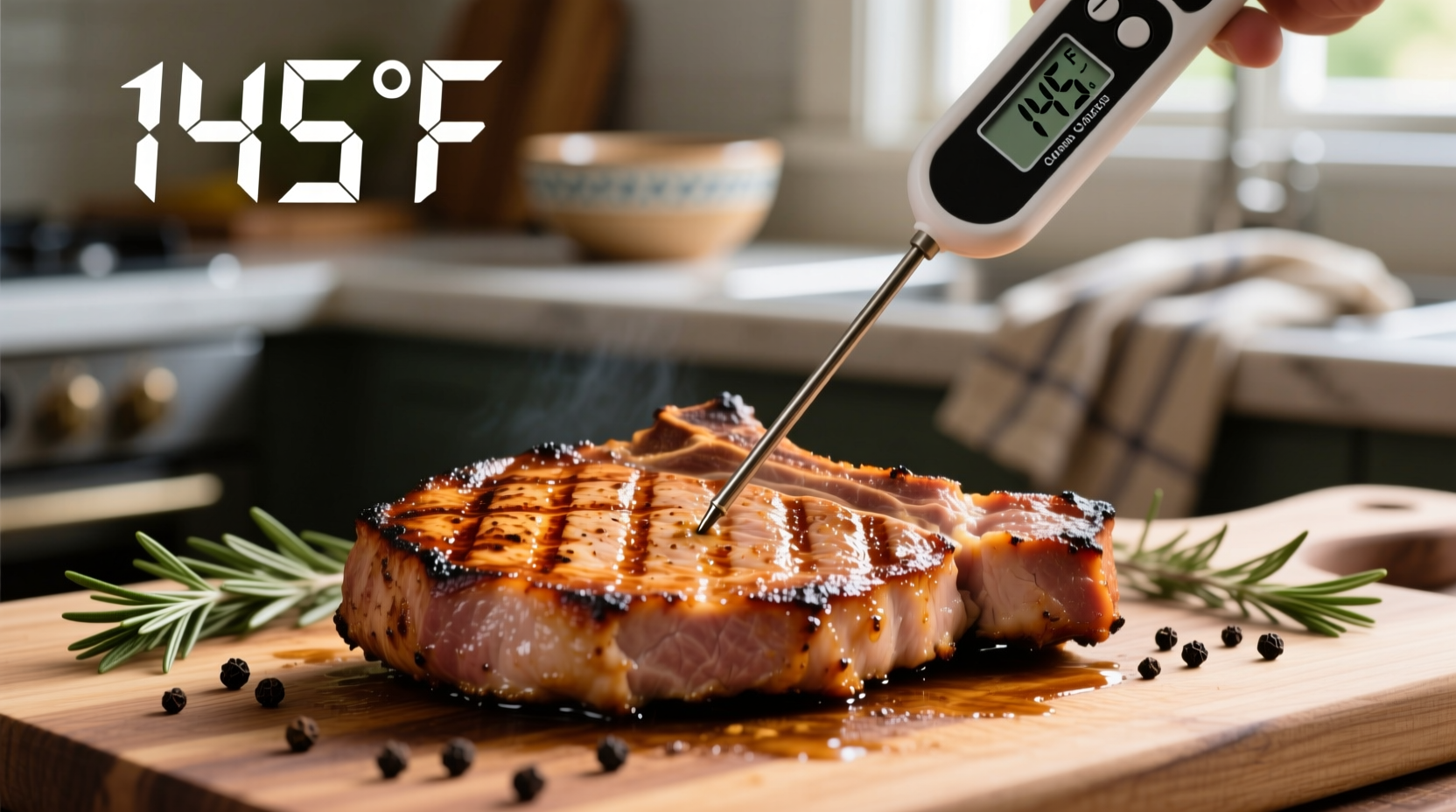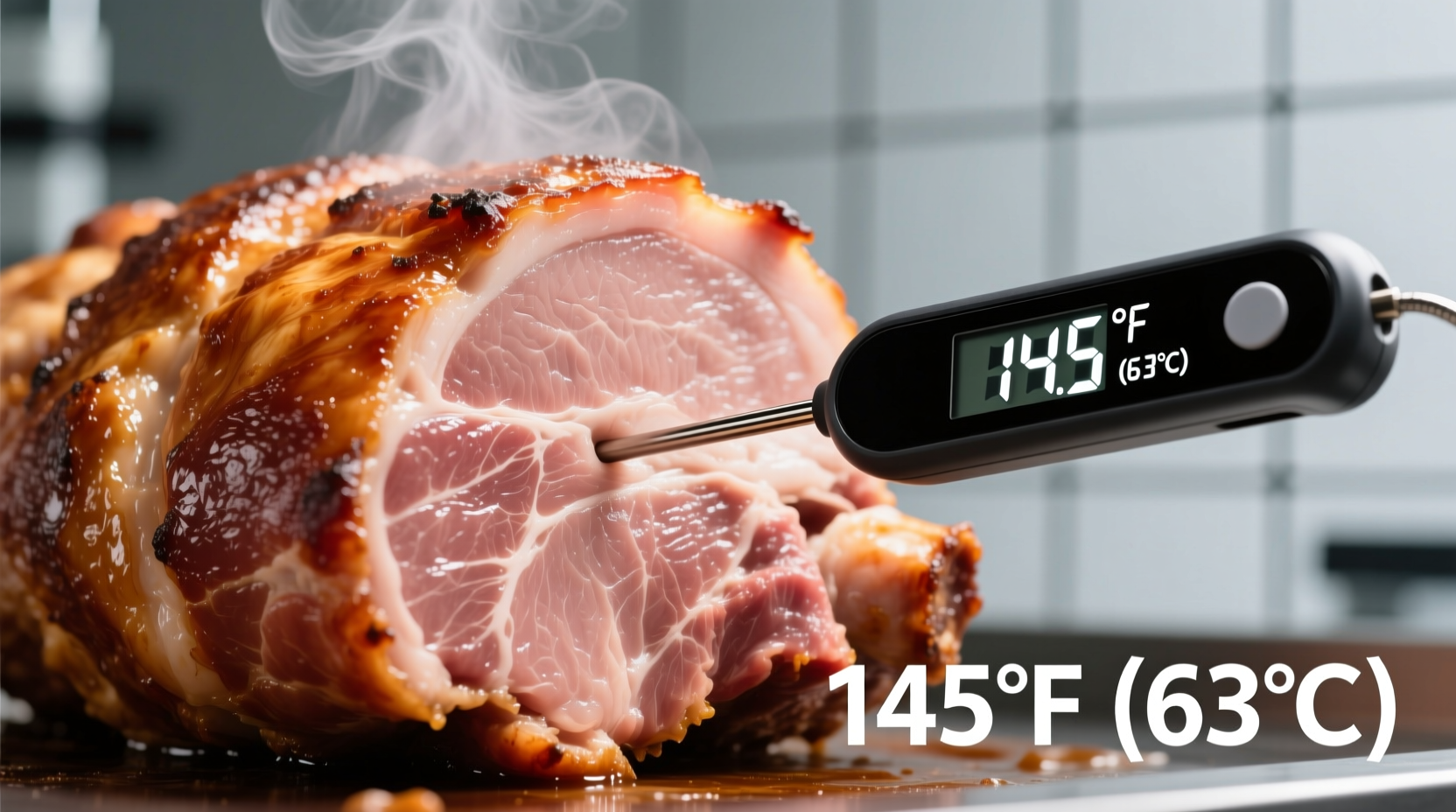For home cooks and culinary enthusiasts, understanding precise pork cooking temperatures isn't just about following rules—it's the difference between a succulent pork chop and a dry, overcooked disappointment. This guide delivers science-backed temperature recommendations you can trust, eliminating guesswork from your cooking process.
Why Pork Temperature Matters for Food Safety
Proper pork cooking temperatures prevent foodborne illnesses while preserving quality. The shift from older 160°F recommendations to the current 145°F standard reflects advances in pork production and food science. Modern pork is raised in controlled environments with strict safety protocols, significantly reducing pathogen risks compared to decades ago.
When pork reaches 145°F, harmful bacteria like Salmonella and Trichinella spiralis are effectively eliminated. The mandatory 3-minute rest period allows heat to continue distributing through the meat, ensuring pathogens are destroyed while enzymes break down muscle fibers for improved tenderness.
Complete Pork Temperature Guide by Cut
Different pork cuts require specific temperature approaches based on their fat content, muscle structure, and intended cooking method. This comprehensive reference eliminates confusion:
| Pork Cut | Recommended Internal Temperature | Rest Time | Visual Indicators |
|---|---|---|---|
| Pork chops, roasts, tenderloin | 145°F (63°C) | 3 minutes | Slightly pink center, clear juices |
| Ground pork | 160°F (71°C) | None | No pink color, opaque throughout |
| Pork shoulder (pulled pork) | 195-205°F (90-96°C) | 20+ minutes | Falls apart easily when probed |
| Ham (pre-cooked) | 140°F (60°C) | 3 minutes | Heated through, not dried out |
How Pork Cooking Temperatures Have Evolved
Understanding the historical context helps explain why recommendations have changed. This timeline shows how scientific advances shaped current guidelines:
- Pre-1980s: Pork routinely cooked to 170°F+ due to widespread Trichinella concerns in conventionally raised pigs
- 1980s-2011: USDA recommended 160°F as farming practices reduced parasite risks
- 2011: USDA updated guidelines to 145°F with 3-minute rest based on FSIS research showing equivalent pathogen destruction
- Present: 145°F standard remains, with emphasis on proper thermometer use and rest periods
This evolution reflects improved pork production standards and better understanding of food microbiology. The change wasn't arbitrary—it resulted from extensive testing by the USDA's Food Safety and Inspection Service, documented in their Cooking Meat to Safe Temperatures publication.
Avoiding Common Temperature Measurement Mistakes
Even with correct target temperatures, improper measurement leads to undercooked or overcooked pork. Follow these professional techniques:
- Thermometer selection: Use an instant-read digital thermometer for precision (analog models can be off by 5-10°F)
- Placement matters: Insert probe into the thickest part, avoiding bone or fat pockets that give false readings
- Multiple checks: Take readings from several spots in larger cuts like roasts
- Final rise awareness: Remember temperature continues rising 5-10°F during rest period
For best results, remove pork from heat when it reaches 140°F—the residual cooking will bring it to the target 145°F during resting. This prevents overshooting your temperature goal.

Situation-Specific Temperature Considerations
While 145°F is the standard, certain situations require adjustments:
- Immunocompromised individuals: Some healthcare providers recommend cooking to 160°F for vulnerable populations despite USDA guidelines
- Commercial kitchens: FDA Food Code requires 145°F for pork but mandates strict documentation of cooking and cooling processes
- Smoking or slow cooking: For pulled pork, temperatures must reach 195-205°F to break down collagen, though safety is achieved well before this point
- Leftover reheating: Previously cooked pork should reach 165°F when reheated
Perfect Pork Cooking Techniques
Temperature is just one element of successful pork preparation. Professional chefs recommend these complementary techniques:
- Dry brining: Salt pork 12-24 hours before cooking to improve moisture retention
- Reverse searing: For thick cuts, cook low and slow to 135°F then sear for perfect crust
- Carryover cooking awareness: Remove from heat 5°F below target temperature
- Resting discipline: Never skip the 3-minute rest—it allows juices to redistribute
Remember that visual cues like clear juices or lack of pink color are unreliable indicators of safety. The USDA explicitly states that color alone cannot determine doneness. Only a properly calibrated thermometer provides certainty.
Frequently Asked Questions
Can pork be safely eaten at 140 degrees Fahrenheit?
Pork reaches safe doneness at 145°F, not 140°F. While removing pork from heat at 140°F allows carryover cooking to reach 145°F during resting, the USDA standard requires a minimum final temperature of 145°F after the rest period for safety.
Why did pork cooking temperatures change from 160 to 145 degrees?
The USDA updated pork temperature guidelines in 2011 based on research showing 145°F with a 3-minute rest provides equivalent pathogen destruction as 160°F without rest. Modern pork production methods have significantly reduced trichinosis risks, making the lower temperature safe while improving texture and moisture retention.
How long should pork rest after reaching 145 degrees?
The USDA requires a minimum 3-minute rest period after pork reaches 145°F. During this time, the temperature remains high enough to destroy remaining pathogens while muscle fibers relax, improving juiciness. For larger cuts like roasts, extend resting to 10-15 minutes for optimal results.
Is slightly pink pork safe to eat?
Yes, pork cooked to 145°F with a 3-minute rest may retain a slight pink color, particularly near bones or in darker meat cuts. This doesn't indicate undercooking—the USDA confirms pink pork is safe when it reaches the proper internal temperature. Color alone is an unreliable doneness indicator.
What's the danger zone for pork temperature?
The food safety danger zone for pork (and all perishable foods) is between 40°F and 140°F. Bacteria multiply rapidly in this range, doubling in number every 20 minutes. Pork should not remain in the danger zone for more than 2 hours (1 hour if ambient temperature exceeds 90°F).











 浙公网安备
33010002000092号
浙公网安备
33010002000092号 浙B2-20120091-4
浙B2-20120091-4